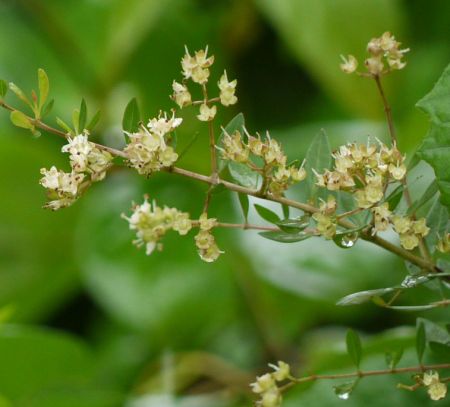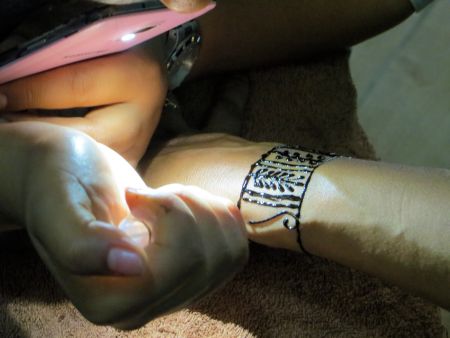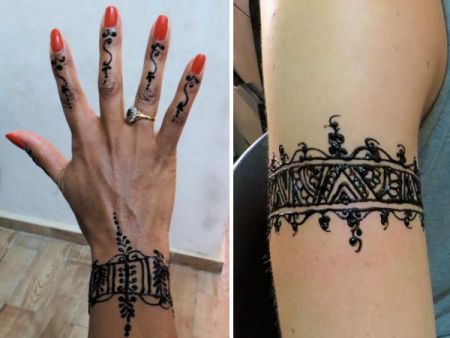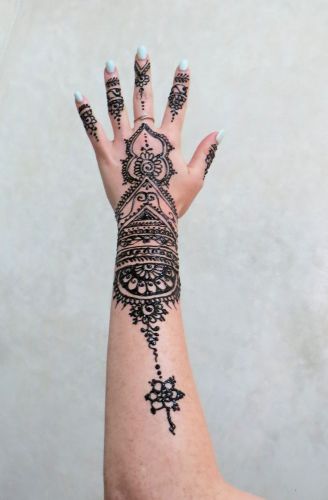
One a recent trip to Morocco, I decided it was time to give in to a long held desire – and get myself a tattoo… not a permanent tattoo of course. A Henna tattoo.
There are all sorts of horror stories about tourists getting caught by henna artists using banned chemical additives resulting in severe reactions and all sort of problems… often requiring medical treatment. So I checked with our hotel and followed their recommendation of a henna parlour.
Five of us – four girls and one young man – set off in search of body art.
We had a lovely time. The whole operation was a group effort – with consultation on which body parts and which designs.
This is the 21st century – so we didn’t go looking through books of patterns and examples. Our artist had her samples in her phone. And when she needed strong lighting for the detailed work – again, she used her phone.

She was fascinating to watch. Once each of us had selected the place we wanted, and a general idea of the style, she just went to work. She had no pattern or template in front of her, she just drew the designs, making them up as she went along from the many traditional swirls and motifs in her head. When she was done, she photographed each one … yes, with her phone … and it’s fun to think my arm is now one of the samples she shows to prospective clients.

As we carefully had lunch, making sure not to smudge the henna as it dried. We did notice that it turned shades of orange/brown. At the time, I didn’t know that real pure henna is red/orange in colour. The darker colour is gained by adding other plant extracts to the henna.

Sadly, the pattern is now long gone from my arm. It only lasts a couple of weeks. The traditional use of henna is for weddings and other celebrations. Henna patterns are a sign of joy. That seems to me to be a good reason to have it done sometime…


Comments
5 responses to “Painting people”
Wow! I really like these, they are my kind of thing. They look terrific. I hope you received lots of compliments!
They were really pretty. It was a fun experience too. Next day we were all swimming ion the hotel pool and they all looked great. J X
These henna tattoos are just lovely, Janet, what lovely designs. xxx
Fascinating!
Sorry to be so late commenting – I’m not a fan of ‘proper’ tatoos, but these are absoltely gorgeous, very elegant and pretty, I can understand why they’d be popular for weddings etc.